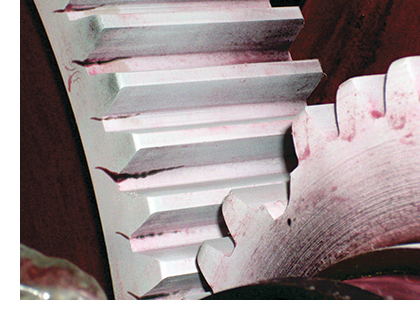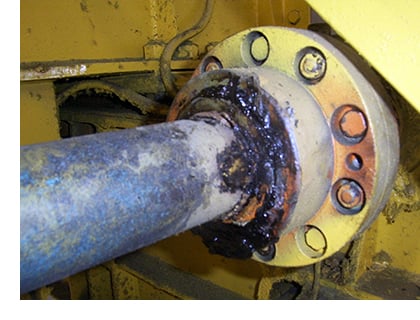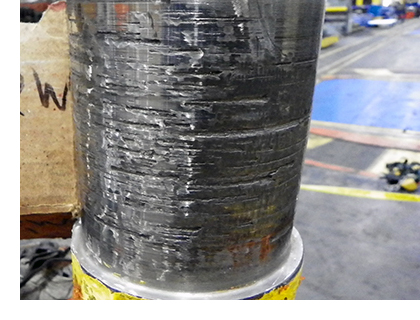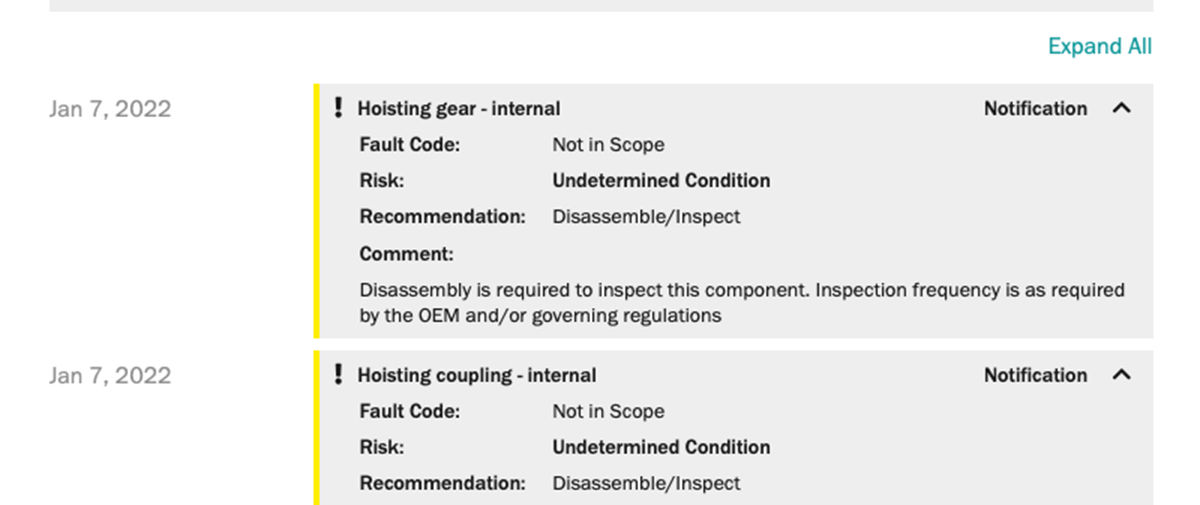You’ve just had your crane inspected and you see “Undetermined Conditions - unable to inspect” on the report. What does that mean and why is it important?
When performing service, we utilize our Risk and Recommendation Method to document component exceptions, assess and prioritize risks, and provide recommendations to improve safety and productivity.
We inspect a component to determine its condition—it is either in acceptable condition or it needs attention. We then document exceptions including failures, deficiencies or violations. Each exception is assigned a risk type of either a safety risk, production risk or undetermined condition.
An undetermined condition means that we were unable to inspect the component because it is not in scope, or we are not able to complete the inspection because of the way the asset is configured and/or there is an obstruction.
Some components require more than a visual inspection
If the component cannot be inspected because it is not in scope that means we cannot verify component condition with a visual inspection and we would need to further disassemble and/or use other inspection methods such as non-destructive testing to fully assess the condition.
Disassembly and other non-visual inspection methods are advanced services and are generally excluded from the scope of typical compliance and preventive maintenance inspections. These advanced services can be added to a Service program or performed on a stand-alone basis to assess the condition of these components.
The components we inspect depend on the inspection product and equipment structure. Inspected objects can include limit switches; hoist brake, motor, coupling and gear; traveling, traversing and rotating machineries; crane and trolley structures, end trucks, walkways and stairs; and bumpers and end stops. Inspection of internal components that require disassembly, such as the internal components of gear cases, couplings and hook blocks are not normally included.
The importance of in-depth inspections of critical components
Gear cases, couplings and hook blocks are critical crane components, and their failure can cause a significant safety risk and/or interrupt production.
Cranes that have been used heavily, had changes in application, or that have been in service for many years can develop cumulative fatigue and other adverse characteristics. Certain defects and deficiencies cannot be seen with the naked eye and may occur within components that are not normally disassembled for inspection. Undetected defects and/or deficiencies in load bearing or safety-related components can lead to catastrophic failure.
Gear cases
 Many gear cases, especially in older cranes, have an inspection cover that allows a limited view of the gearing. It is possible to see large areas of tooth wear and distress on gear teeth surfaces, but some issues cannot be seen due to their location and small size. Over time cumulative fatigue can cause faults in the gears such as cracks, pitting and spalling. Cracks can start out very small and even with the top half of the gear case removed they may not be visible. A more in-depth Advanced Gear Case Inspection using non-destructive testing can help reveal small issues before they become a big problem.
Many gear cases, especially in older cranes, have an inspection cover that allows a limited view of the gearing. It is possible to see large areas of tooth wear and distress on gear teeth surfaces, but some issues cannot be seen due to their location and small size. Over time cumulative fatigue can cause faults in the gears such as cracks, pitting and spalling. Cracks can start out very small and even with the top half of the gear case removed they may not be visible. A more in-depth Advanced Gear Case Inspection using non-destructive testing can help reveal small issues before they become a big problem.
Couplings
 Most hoist couplings are not visible or accessible during an inspection because they are typically hidden within the hoist machinery and the disassembly of the motor/gear case is required to inspect them. Failure of a hoist coupling may lead to a load drop scenario and subsequent reliance on secondary braking such as regenerative braking or mechanical load brakes. A Coupling Inspection includes cleaning the coupling of old grease and a visual inspection that can be supported by non-destructive testing if warranted.
Most hoist couplings are not visible or accessible during an inspection because they are typically hidden within the hoist machinery and the disassembly of the motor/gear case is required to inspect them. Failure of a hoist coupling may lead to a load drop scenario and subsequent reliance on secondary braking such as regenerative braking or mechanical load brakes. A Coupling Inspection includes cleaning the coupling of old grease and a visual inspection that can be supported by non-destructive testing if warranted.
Hook blocks
 A crane’s bottom block assembly is made up of many critical components whose proper function and condition are crucial to the safe operation of your equipment. These components are subjected to loads and stresses during each hoisting cycle. While hook failure can occur due to overloading or mechanical abuse of the hook, hooks often fail due to cumulative fatigue. These failures usually originate as a fatigue crack in the hook shank. The hook shank, which transfers the load to the hook block, is supported within the body of the block by a rotate bearing and other mechanical components and is not visible without disassembly. In a Hook/Shank Inspection the bottom block is disassembled and the critical components are examined along with the hook shank where most fatigue failures originate.
A crane’s bottom block assembly is made up of many critical components whose proper function and condition are crucial to the safe operation of your equipment. These components are subjected to loads and stresses during each hoisting cycle. While hook failure can occur due to overloading or mechanical abuse of the hook, hooks often fail due to cumulative fatigue. These failures usually originate as a fatigue crack in the hook shank. The hook shank, which transfers the load to the hook block, is supported within the body of the block by a rotate bearing and other mechanical components and is not visible without disassembly. In a Hook/Shank Inspection the bottom block is disassembled and the critical components are examined along with the hook shank where most fatigue failures originate.
When to inspect components with an undetermined condition
Inspection frequency for components with an undetermined condition should follow OEM recommendations and/or local regulations. If these are not readily available, Konecranes can recommend inspection intervals based on equipment usage and operating environment.
If no inspection records are available, disassembly/inspections of these components should be carried out without delay to determine their current condition and to establish a baseline for subsequent inspections.
Contact us for more information about our advanced inspections

 Many gear cases, especially in older cranes, have an inspection cover that allows a limited view of the gearing. It is possible to see large areas of tooth wear and distress on gear teeth surfaces, but some issues cannot be seen due to their location and small size. Over time cumulative fatigue can cause faults in the gears such as cracks, pitting and spalling. Cracks can start out very small and even with the top half of the gear case removed they may not be visible. A more in-depth
Many gear cases, especially in older cranes, have an inspection cover that allows a limited view of the gearing. It is possible to see large areas of tooth wear and distress on gear teeth surfaces, but some issues cannot be seen due to their location and small size. Over time cumulative fatigue can cause faults in the gears such as cracks, pitting and spalling. Cracks can start out very small and even with the top half of the gear case removed they may not be visible. A more in-depth  Most hoist couplings are not visible or accessible during an inspection because they are typically hidden within the hoist machinery and the disassembly of the motor/gear case is required to inspect them. Failure of a hoist coupling may lead to a load drop scenario and subsequent reliance on secondary braking such as regenerative braking or mechanical load brakes. A
Most hoist couplings are not visible or accessible during an inspection because they are typically hidden within the hoist machinery and the disassembly of the motor/gear case is required to inspect them. Failure of a hoist coupling may lead to a load drop scenario and subsequent reliance on secondary braking such as regenerative braking or mechanical load brakes. A  A crane’s bottom block assembly is made up of many critical components whose proper function
A crane’s bottom block assembly is made up of many critical components whose proper function